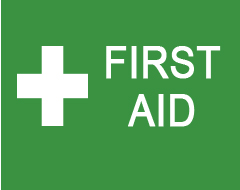
First aid kits are essential on farms. Life on a farm comes with its own set of hazards and a first aid kit should be properly stocked and available at all times. It’s a good idea to keep a first aid kit in the home, car, ute, truck, shearing shed and workshop.
Well-stocked first aid kits should contain components to address:
- Snake bites.
- Bleeding, wounds, lacerations and splinters.
- Burns and scalds.
- Stings and bites.
- Eye injury.
- Resuscitation.
- Exposure to heat or cold.
- Sprains, dislocations and fractures.
Thes items will enable emergency care to be given to an injured family member or employee until medical assistance arrives. The isolation of many Australian farms means medical assistance may take time to arrive. Consequently, preserving life, preventing a condition from worsening and the promotion of recovery is more likely to occur with a well-stocked first aid kit.
Everyone living and working on a farm should know the location of all first aid kits and be trained in first aid; once a course is completed, refreshers are required every three years. To remain effective, first aid kits need to be maintained through regular component checks and used or expired stock replaced as soon as possible.
For more information on first aid kits visit Better Health Channel.
Fast facts:
- First aid kits are an essential farm item.
- Ensure first aid kits are well stocked and comply with Australian standards.
- Keep several well-stocked kits around the farm.
- Ensure kit contents do not exceed the use-by date.
- Seek training in first aid and keep first aid knowledge and skills updated.
References used for this topic
More information:
Australian Red Cross
First Aid and Mental Health training
Better Health Channel
First aid basics and DRSABCD
Safework Australia
First aid
St John Ambulance Australia
Visit website
|
|